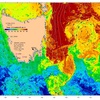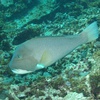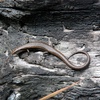
Climate change on the Apple Isle’s doorstep: EAC warms Tasmanian waters
Tasmania's east coast is considered a global warming hotspot with waters warming up to four times the global average. Why are Tasmanian waters warming so fast?



Tasmania's east coast is considered a global warming hotspot with waters warming up to four times the global average. Why are Tasmanian waters warming so fast?

The impacts of climate change on tropical fisheries in northern Australia is being investigated by a three-year research project through the FRDC (Fisheries Research and Development Corporation). Using existing data, the study will review how climate change affects important tropical fish species like Barramundi, Spanish mackerel and coral trout; and predict impacts on fisheries in the future.

Ocean ecosystems are changing and some fish are on the move along the Western Australian coast.

From barnacles to seaweed and fish, Australian marine life are shifting house in search of cooler waters.

Climate change can alter the timing (phenology) of life cycle events and the physiology of an organism: impacting a species' reproduction, behaviour, feeding, interactions and where they live.

All animals occupy a piece of real estate on this earth, known as their geographic distributional range. Various factors contribute to determining a species’ range, but temperature is up there in importance. This article compares the reponse of land and sea animals to climate warming.

Many coastal waters around Australia are warming up, according to monitoring by the CSIRO Marine and Atmospheric Research. Yet Western Australia has experienced a relatively 'weak' ocean warming of less than 0.5°C since the 1960s.